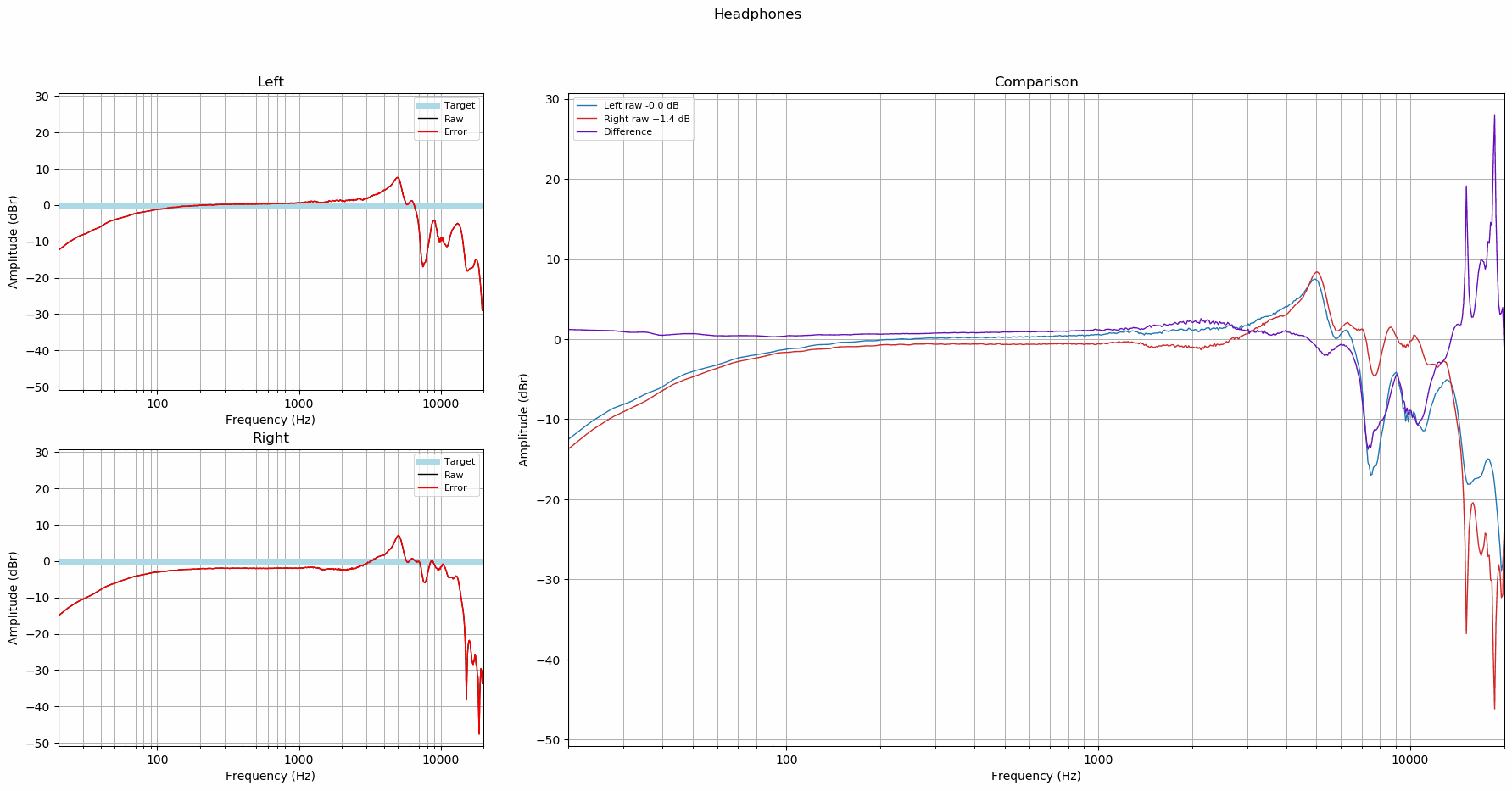I did new measurements today. This time I had speakers a bit closer together and this improved the phantom center image. Room acoustics management was used during all speaker measurements and while this was only two paramteric filters at around room mode frequencies, it had very positive impact on the results. Now there is barely any need for reverberation management to remove the bass ringing. There is still a bit left but it's very minor. I strongly suggest using room eq during measurement until the frequency dependent reverberation management is done.
This time I made sure I don't have channel balance issues in Volume2 and now the channel balancing in Impulcifer is not needed. The trend balance method does basically nothing audible, the balance is so good out of the box. I did headphone compensation measurements 4 times and each time the frequency response changes a lot above 6 kHz. Headphone compensation remains a problem. The more I read about it and study it, the more difficult it seems to do right.




Webcam was above me this time and that really made it a lot easier to place the room measurement microphone to the same location where the binaural mics where. This resulted in a lot better tonality for surround channels. I wore a hat (tube scarf actually) beacuse otherwise my hair hides the pinna making it impossible to locate the ear canal entrance from the webcam ghost images. Still the pictures don't quite show the location of the ear canal entrance but I think I got it estimated well enough. You'll see in the picture that the room measurement mic is placed a bit towards the center of the head from the left ear pinna. There are two pictures in the side panel for center measurements (pics 2 and 3) because I wanted to test FC measured with FL vs FR. Pictures 4 and 5 are for surround channels.

I think all in all this is my favorite so far and therefore I updated the demo recordings to the new one.




























